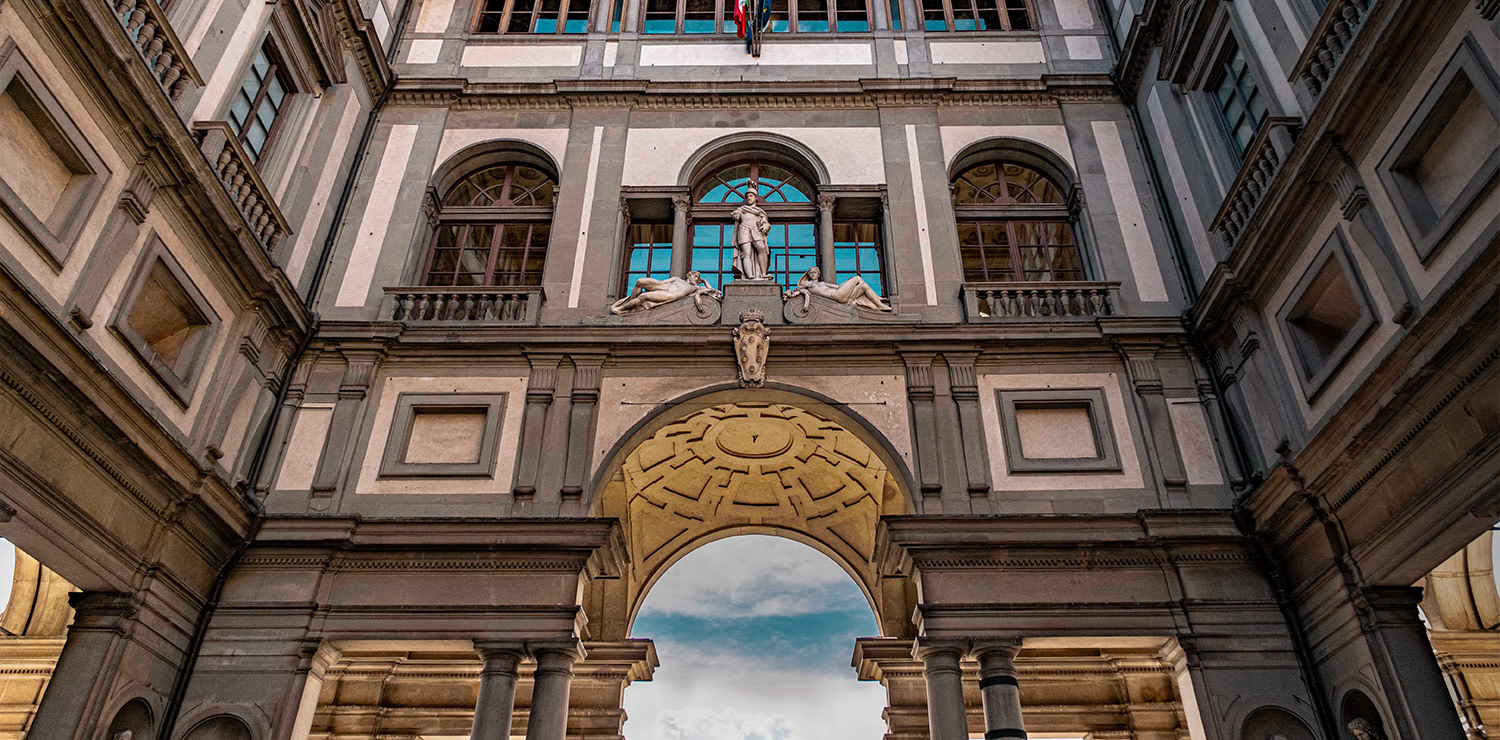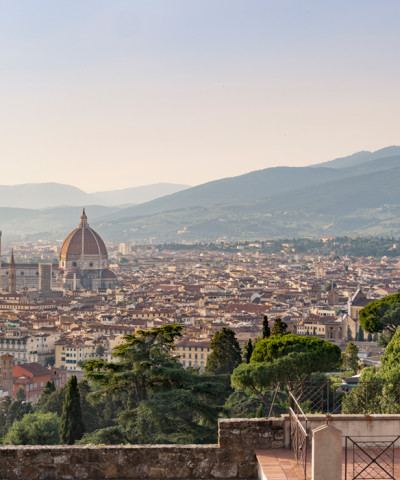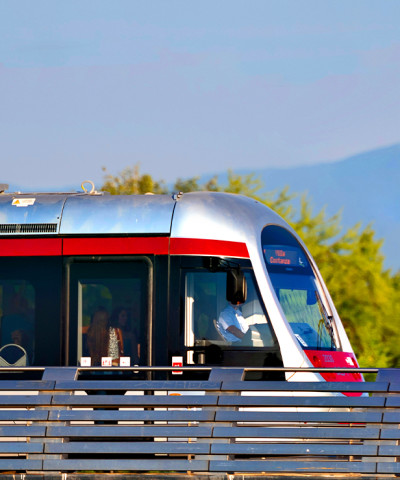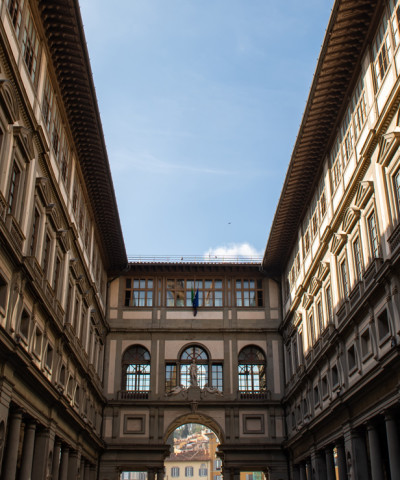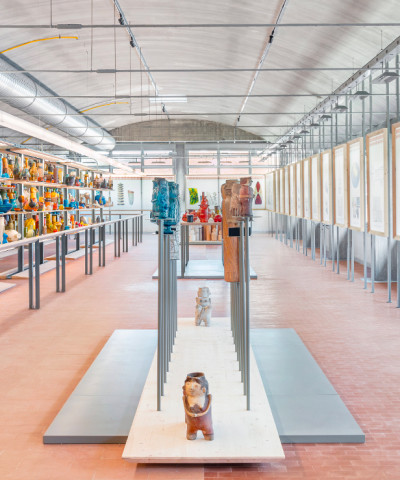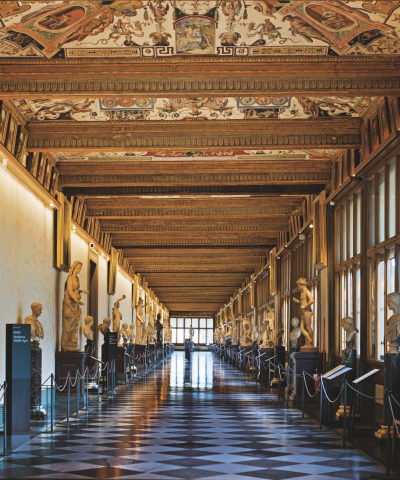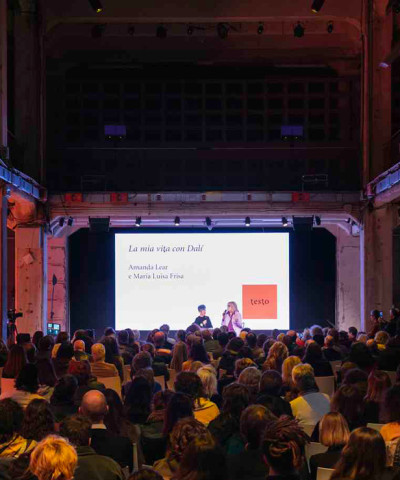The Florence of Cosimo I
All the places that tell of the first grand duke of Tuscany, who revolutionized the city
This spring, 450 years will have passed since that 21 April 1574 when Cosimo I de’ Medici, the second Duke of Florence and first Grand Duke of Tuscany, died in Palazzo Pitti. Cosimo had the ambition to bring a project to life that would profoundly impact every aspect of Tuscan life, from institutional organisation to artistic production, from religious fervour to architectural grandeur, leaving numerous traces in our city and region.
(Here our in-depth look at the Uffizi Gallery, here our tour of the Vasari Corridor and here a focus on the Boboli Gardens).
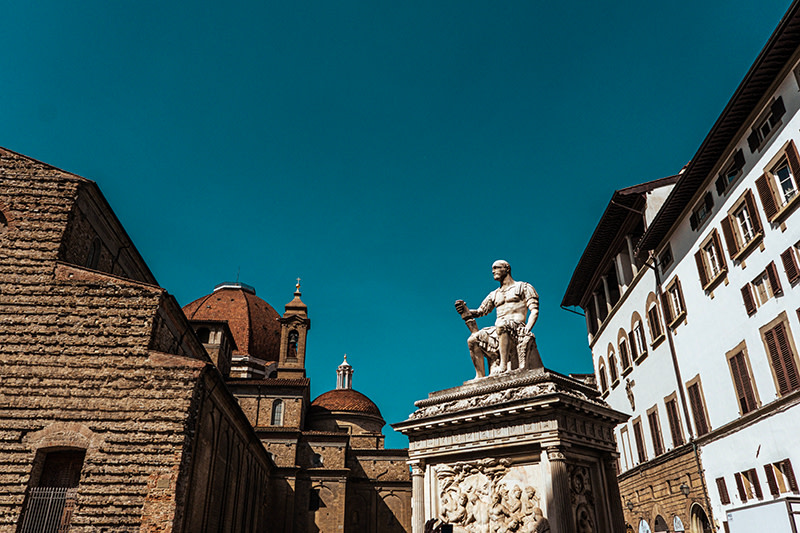 The mausoleum with which Cosimo wished to celebrate his father, in Piazza San Lorenzo
The mausoleum with which Cosimo wished to celebrate his father, in Piazza San LorenzoSon of Giovanni delle Bande Nere (from the cadet branch of the powerful Medici family) and Maria Salviati, Cosimo spent his childhood in the green hills of Mugello. His life took a turn in 1537, when upon the death of Alessandro, he obtained the Duchy of Tuscany. The support of Charles V of Spain and his marriage in 1539 to Eleanor of Toledo consolidated his position, allowing him to start a policy of territorial expansion that led to the conquest of Piombino,Elba and Siena. He built fortresses and arsenals in Pisa, Pistoia, Livorno and Arezzo , and in Romagna he built the fortress-cities of Terra del Soleand Città del Sole, but it was Florence that was the great stage where the prince’s magnificence would bear its most exalted fruit.
Let us retrace Cosimo’s milestones in a walk that starts from what we now know as Palazzo Vecchio, but which, thanks to Cosimo’s will, became the residence of the court in 1540, taking the name Palazzo Ducale instead of Palazzo dei Priori. The traces of Cosimo here are truly infinite, but it is worth mentioning the great decoration of the Salone dei Cinquecento, carried out by Vasari with his team of craftsmen, with its large frescoed walls, magnificent wooden ceiling and theUdienza with sculptures by Baccio Bandinelli. In the Quartiere di Leone Xyou can admire the Sala di Cosimo, where you can retrace all the salient stages of his rise to power and his conquests. A room that recounts the duke’s geographical and intellectual interests is that of the Carte Geografiche, where two great cartographers, Egnazio Danti and Stefano Bonsignori, took turns illustrating the entire then known world.
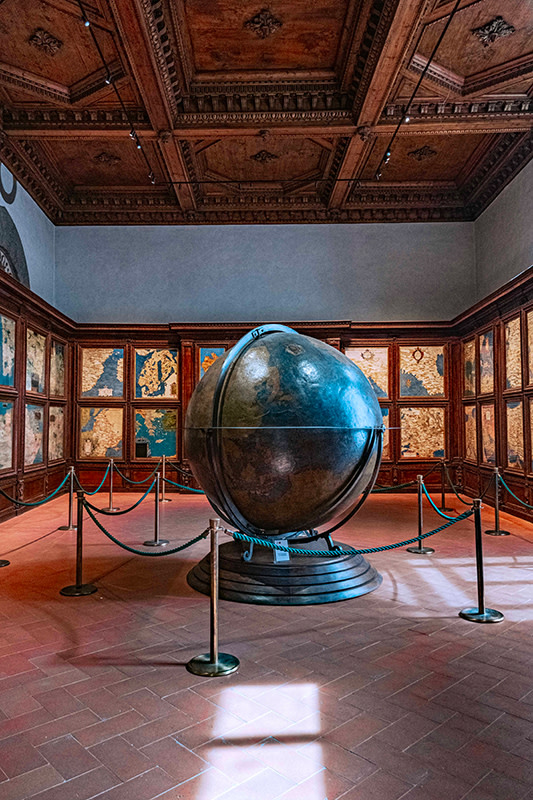 Palazzo Vecchio
Palazzo VecchioIn Piazza della Signoria it is worth mentioning at least the statue of Perseus commissioned by Cosimo to the intemperate and ingenious Benvenuto Cellini, a direct warning to all those who wished to question the power of the prince, and the great equestrian monument dedicated by his son Ferdinando to his august father and created by Giambologna.
Again for sculpture, we cannot fail to mention the great Neptune Fountain, created by Bartolomeo Ammannati in a magnificent challenge between the white marble colossus, ‘the giant’, his tritons and the chariot drawn by four horses that seem to emerge from the sea, creating a series of crystallised waves from the marble basin in Medici breccia (Cosimo’s sign par excellence) and surmounted by a series of bronze sea deities.
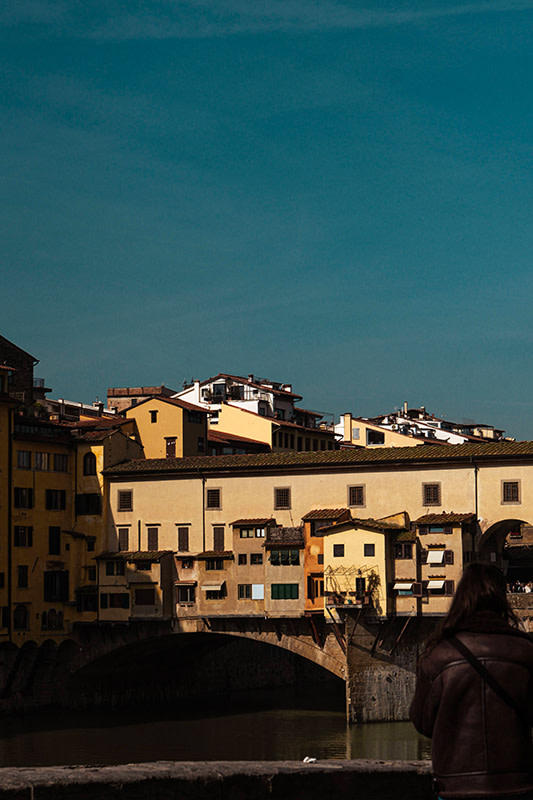 Vasari Corridor
Vasari CorridorThe nearby Fabbrica degli Uffizi represents one of the great innovations brought to Florence by Cosimo’s favourite architect, Giorgio Vasari. The construction of the Uffizi will offer the opportunity to redesign a vast portion of the urban fabric between Palazzo Vecchio and the river Arno. The intermediate space between the two parallel arms of the new building has a dual function: on the one hand, it serves as a street, on the other as a square. This was the seat of the magistracy(Uffizi) now totally subjugated, even spatially, to Cosimo’s power.
Above the Uffizi, Vasari, with uncommon skill, created the great corridor that joins Palazzo Vecchio to the Uffizi and then passes over Ponte Vecchio to reach Palazzo Pitti.
The same Palazzo Pitti that Duchess Eleanor bought with her own resources with the idea of building the new ducal palace with the extraordinary Boboli Garden here.
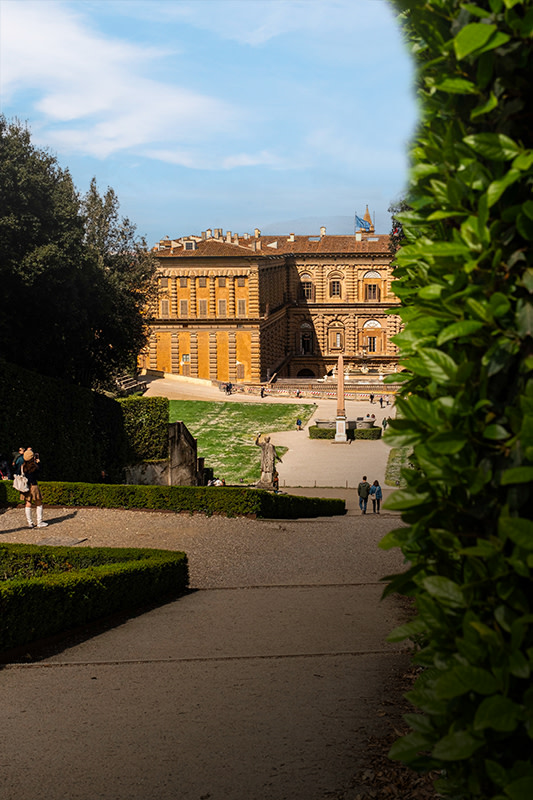 Palazzo Pitti
Palazzo Pitti The magnificence of the palace and the Boboli Gardens is still evident today. Cosimo availed himself of his best craftsmen, in particular Bartolomeo Ammannati, who endowed the palace with the grandiose and impressive courtyard that connects it to the Boboli Gardens.
Returning to the right side of the Arno we cross the Ponte a Santa Trinita rebuilt at the behest of Cosimo after its destruction in 1557. It was Ammannati who built the most beautiful bridge in the city, which is distinguished by the slenderness of its elliptical arches and rostral piers, marked by large white marble plaques with capricorn heads, the elective sign of Duke Cosimo.
A little further on stands the Column of Justice composed of a shaft from the Baths of Caracalla and donated to Cosimo by Pius IV in 1561. Once again the work of Bartolomeo Ammannati.
Continuing towards the centre, we cannot forget another great Cosimo factory, the Loggia di Mercato Nuovo, now known as the friendly ‘Porcellino’. The loggia will cover and dignify a space that has been used since the Middle Ages to house merchant stalls, international trade foundations and the buying and selling of silk. To create it, in 1546, Cosimo called Battista di Marco del Tasso, the woodsman architect who was already at work in the Palazzo Vecchio.
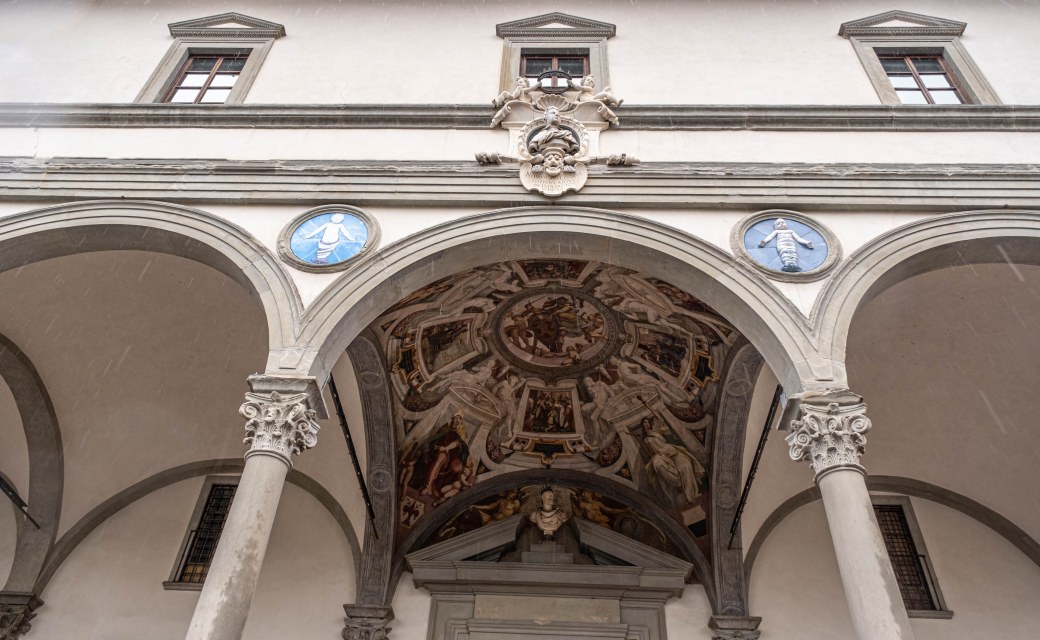 The Loggia dei Servi di Maria in Piazza Santissima Annunziata, with episodes from Cosimo’s life
The Loggia dei Servi di Maria in Piazza Santissima Annunziata, with episodes from Cosimo’s life Cosimo was also a source of inspiration for the nobility or bourgeoisie who wished to modernise their palaces, such as Giovanni di Buonaccorso Uguccioni, who built his palace in Piazza della Signoria in a style that remains unique in the Florentine panorama, inspired by the Roman taste of the time linked to Bramante and Raphael, while the Spaniard Antonio Ramirez de Montalvo, a courtier in the retinue of Eleonora di Toledo, created his palace in Borgo degli Albizi where Ammannati and Giorgio Vasari worked.
We complete our partial journey through Cosimo’s Florence by stopping at the Chapel of San Luca at the Convent of the Santissima Annunziata. The Chapel, also known as the Cappella dei Pittori, was granted to the Accademia del Disegno when it was established, sponsored by Duke Cosimo in 1563, and where the best Florentine painters and sculptors of the time worked on its decoration. The chapel houses the tombs of important academics who lived during Cosimo’s time, such as Benvenuto Cellini and Jacopo Pontormo, who rest in the crypt-sacellum below, accessed by lifting a white marble plaque.
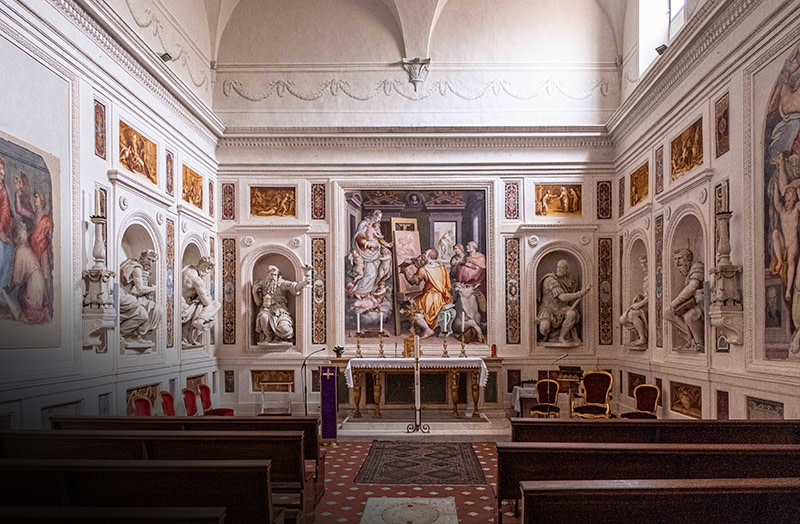 Chapel of San Luca at the Convent of the Santissima Annunziata
Chapel of San Luca at the Convent of the Santissima AnnunziataMany other destinations in our Florence have seen and still preserve traces of the intervention of that young man who, as recalled by the mausoleum with which Cosimo wished to celebrate his father and which stands today in Piazza San Lorenzo , althoughbelonging to a cadet branch of the great Medici lineage, achieved what the main branch, to be precise that of Cosimo the Elder and Lorenzo the Magnificent, could not, thus putting his motto into practice: Festina Lente (rush slowly) to give Florence and Tuscany a modern state.






